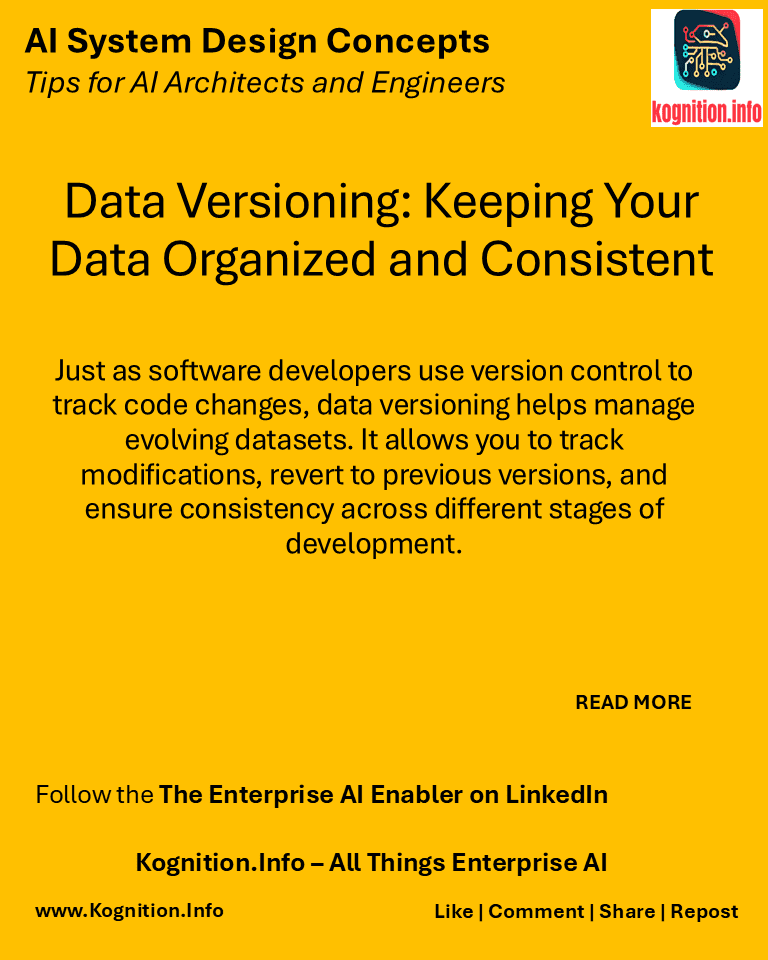
Just as software developers use version control to track code changes, data versioning helps manage evolving datasets. It allows you to track modifications, revert to previous versions, and ensure consistency across different stages of development.
Use cases:
- Model training: Keeping track of the specific dataset version used to train a model for reproducibility and comparison.
- Experimentation: Managing different versions of datasets used in experiments to analyze the impact of data changes on model performance.
- Auditing and compliance: Maintaining a history of data changes for regulatory compliance and auditing purposes.
How?
- Choose a versioning tool: Utilize tools like DVC (Data Version Control), Git LFS (Large File Storage), or cloud-based solutions like AWS S3 versioning.
- Define versioning strategy: Establish clear rules for creating new versions, labeling them, and documenting changes.
- Integrate with your workflow: Incorporate data versioning into your data pipelines and model training processes.
Benefits:
- Reproducibility: Ensures that you can recreate experiments and reproduce results.
- Collaboration: Facilitates teamwork by allowing multiple users to work on the same dataset without conflicts.
- Traceability: Provides a clear audit trail of data changes for accountability and debugging.
Potential pitfalls:
- Storage costs: Versioning can increase storage requirements, especially for large datasets.
- Complexity: Managing multiple versions can become complex if not properly organized.
- Integration challenges: Integrating data versioning with existing workflows may require adjustments and careful planning.
